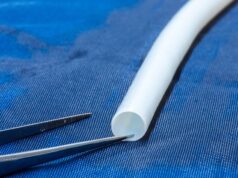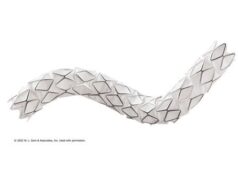Since September 2007, civilian Society for Vascular Surgery members have volunteered at America’s largest hospital outside its borders at the U.S. Army’s Landstuhl Regional Medical Center (LRMC), a state-of-the-art Level I trauma center in Germany that provides medical care for coalition forces from 48 countries who are fighting “down range” in both Iraq and Afghanistan.
For the fifth year, SVS members have volunteered to provide continuous two-week rotations of vascular surgeons at LRMC. SVS members are helping to repair damaged arteries and veins of military personnel who are fighting the Global War on Terror.
The Army, Air Force, Navy, Marine, and civilian medical staff at LRMC have treated more than 64,000 wounded warriors since 2001.
Most patients remain at LRMC for 3 to 5 days before being transported to other military medical facilities. The survival rate at LRMC is 99.5%.
Additionally, LRMC provides medical care for the more than 245,000 U.S. military personnel and their families stationed in Africa, Europe, and the Middle East.
Yet the Army has only 24 active duty vascular surgeons. These medical officers are stationed at combat hospitals and stateside U.S. military facilities. LRMC does not have permanently assigned military vascular or cardiothoracic surgeons although there is often a need for these specialties.
The void created an opportunity for SVS members.
“I asked fellow SVS members to support the troops and serve as two-week volunteer vascular surgeons at LRMC,” said Dr. David Gillespie COL (ret), MC, USA, Chief and Professor, Division of Vascular Surgery, University of Rochester, School of Medicine and Dentistry, Rochester, N.Y.
“The Army agreed to provide overseas transportation and base housing.”
With the details finalized, Dr. Ruth L. Bush of Texas A & M University became the first of the many SVS volunteer vascular surgeon at LRMC.
“Since September 2007, 76 SVS members have donated their time and talents,” according to Dr. Gillespie.
“The surgeons find the experience rewarding. Many return year after year. There’s a waiting list for surgeons wanting to volunteer in 2012.”
The unique military and civilian medical collaboration is a “win-win” for the surgeons and their patients.
SVS surgeons witness military efficiency, especially real-time record-keeping.
“Extraordinary telecommunications make it possible for surgeons ‘down range’ to speak with staff at LRMC and hospitals in the United States,” said Dr. Michael Weingarten of Drexel University, Pennsylvania. “This facilitates continuity of care from point of injury.”
Likewise, SVS surgeons performed the first thoracic endovascular graft implant procedure at LRMC.
Although commonly performed at civilian hospitals to repair diseased or torn aortas, the procedure had never been attempted at LRMC.













